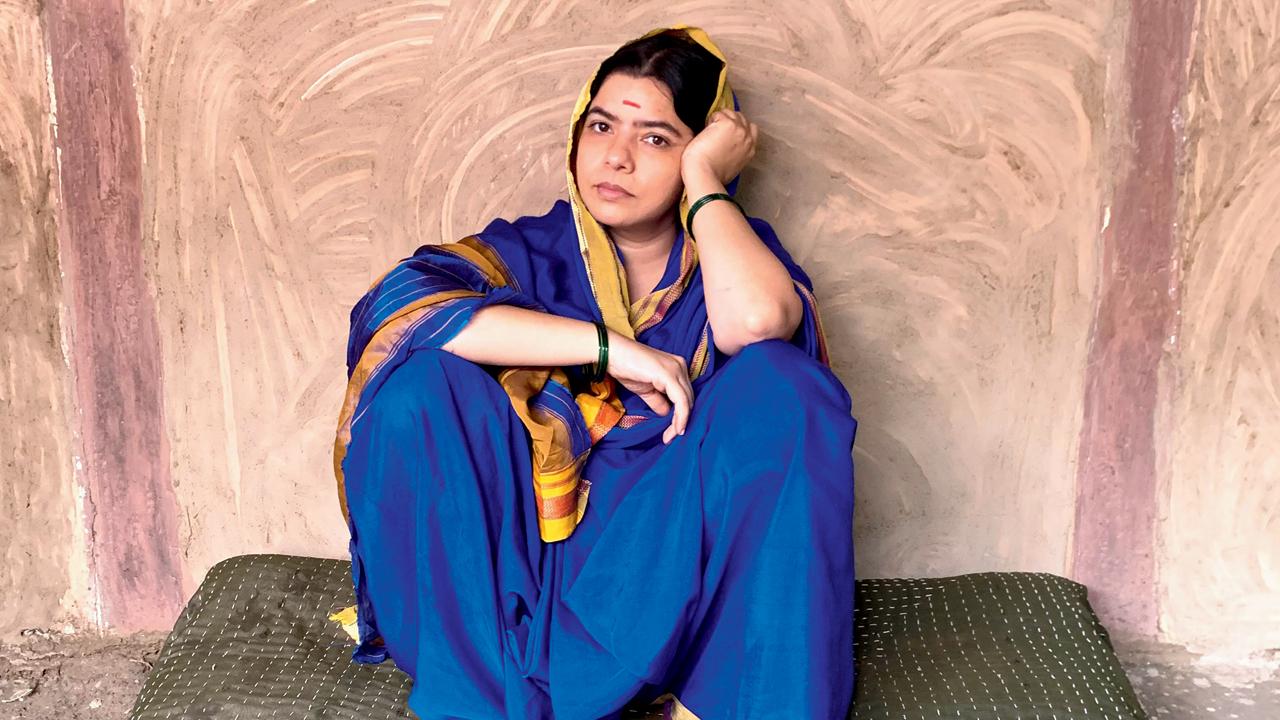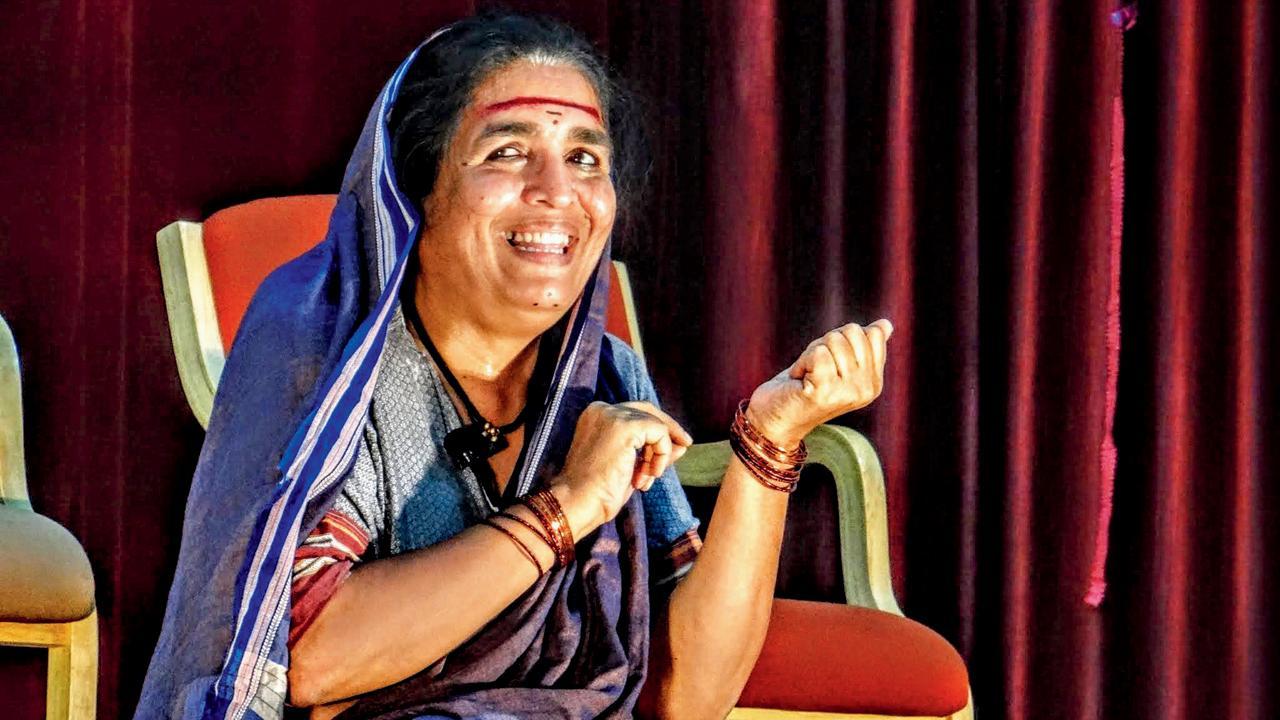Even if I wasn’t a Marathi actress, the opportunity to play Savitribai would’ve been a huge honour-Rajshri Deshpande
7:41 PM
Posted by Fenil Seta

Rajshri and Sushama Deshpande are bringing the Maharashtrian social reformer to newer audiences. Depicting her story and struggles has radically changed them as actors and women
Neerja Deodhar (MID-DAY; January 7, 2024)
As we speak over the phone on January 3, veteran theatre actress and director Sushama Deshpande reminds this writer of the significance of this date: 34 years ago, on this day, she staged the first ever performance of her beloved Marathi play, Vhay Mi Savitribai. It is also the birth anniversary of the subject of the play, Savitribai Phule—the formidable social reformer who was the first female teacher in the Indian subcontinent.
Sushama is in the throes of putting together an English version of the play, so it can reach wider and newer audiences in the third fourth decade of its life. As the actress, who has also starred in films like Umbartha (1982) and Ajji (2017) pores over the script and works with her crew, another artist waits for the world to see her depiction of Savitribai. Between premieres and press meets, Rajshri Deshpande speaks ecstatically of Satyashodhak—a small-budget Marathi film she shot seven years ago, whose release was affected by the COVID-19 pandemic. Long before she earned acclaim through Sacred Games (2018) and Sexy Durga (2017), Rajshri recognized how this opportunity could shape her career. Who could ever say no to the role?
Through their deep engagements with Savitribai’s life story, including the ostracism she faced for educating girls across the lines of caste and class, both Sushama and Rajshri found themselves transformed and capable of overcoming their own challenges. In conversations with mid-day, the actresses reflect on the impact the reformer had on their craft, and why her story matters in 21st century India.
When former journalist Sushama Deshpande first took an interest in Phule’s life, a play focused on the reformer was not on the cards. “I realized that more people knew Jyotiba than they did Savitribai. And the state of society and the way women are treated—as they were in the ‘80s and as they continue to be today—calls for a retelling of her story… The choice to present it as a play was because of the lively nature of theatre. I wanted viewers to feel like they were meeting Savitri face to face,” the actress says.
The character is representative of the concerns of rural and urban women, Sushama opines; she wants to underscore that there is a Savitribai within them all. “This was an uneducated woman who was given the chance to change her life—and she took it, while also changing the lives of those around her. I want women to believe that they, too, have the power to change their circumstances.”
The audience response to Vhay Mi Savitribai has varied across contexts, from political rallies to rural settings. In Uttarakhand, Sushama noticed that many men attended the performances, possibly because the subject matter made them curious. But her favourite shows remain the ones staged at colleges and attended by young women. “I like reaching out to this segment of female attendees. It has happened before that these college girls have sent their own daughters to watch performances of the play, 20 years after they first did,” she says.
Performing over four decades gave the actress repeated opportunities to learn about facets of the Phules’ life she hadn’t known of before. “I remember being struck by the story of how the couple was asked to leave their family home. They were given shelter by Savitribai’s friend and colleague Fatima Sheikh—a fact that unfortunately remains unacknowledged and unknown,” she says. In recent years, Sushama has taken a step back from acting in the play, instead focusing on her role as a director.
Vhay Mi Savitribai has now taken on a life of its own, owing to Sushama’s openness and magnanimity in sharing the script. “I may have written the play, but I will never claim to have rights over her life’s story… I’ve always been willing to send a copy of the script to anyone who wishes to perform it and is earnest. This is why audiences have watched it in Gujarati, Bengali, Hindi and even Adivasi languages. The play will soon be performed in the Pauri dialect, thanks to a young woman who reached out to me,” Sushama says elatedly.
When the actress has felt let down by life, she found herself uplifted by the play—in readings, rehearsals and performances. “Savitribai gives me a sense of courage and power that is difficult to explain to others. But I feel it so palpably in my mind and heart,” Sushama concludes.
When Rajshri Deshpande and her film Angry Indian Goddess were travelling to festivals in India and abroad in 2015, she did not expect to be sought out by Sandeep Kulkarni–who plays Jyotiba in Satyashodhak—with a role. Kulkarni was impressed with her performance in the film and had learnt that she could speak Marathi. Rajshri did not hesitate; as someone who grew up in Marathwada’s villages, Savitribai’s part spoke to her.
“To Maharashtrians, the Phules are our heroes. But even if I wasn’t a Marathi actress, the opportunity to play Savitribai would’ve been a huge honour,” she says.
Kulkarni and the film’s director Nilesh Jalamkar were also drawn in by the social work Rajshri had undertaken in Marathwada, from waterworks to the building of toilets. It’s a subject the actress keeps returning to in her conversation with this writer. Consider, for example, how she prepared for the role: She read a number of books recommended by Jalamkar and worked on the character’s physical attributes—the way she would have worn a saree, walked, talked and the gestures that people associated with her. But Rajshri was more invested in understanding Savitribai’s state of mind.
“In my experiences of working on the ground, I have felt rage and frustration. But when I learnt of Savitribai’s journey, the ways in which she persevered and remained calm, freed me from what was holding me back. Playing her empowered me and helped me evolve,” she shares.
Savitribai is known for setting up shelters for destitute women and abandoned child brides. But the visual that most people return to is of her determination to teach in the face of verbal abuse and ostracism, even being pelted with dung and stones. It is stories like these that Rajshri dwelled on when she worked towards setting up a school that would provide a holistic education in 2018.
“The initiative took two years, in the absence of support and funds. It required bringing the whole village together, and convincing all stakeholders about the need for a school that is beautiful and green. Many asked why I was investing so much time and energy in this endeavour when a simpler school could be built instead. Some wondered why I wanted to support a Marathi-medium government school,” the actress rues. Yet she remained steely in her determination to change rural children’s experience of schooling by setting up an institution which would emphasize the importance of art, craft and sport.
Rajshri is fascinated by the different eras of Savitribai’s life, but she has often wondered about the years that came after Jyotiba’s passing. Sadly, this is not an aspect depicted in Satyashodhak. “Our film’s runtime is two hours, but the scope and impact of the Savitribai’s work is boundless like the sky—and we know that the sky cannot be captured in a feature film,” she says pragmatically.
The film is Rajshri’s third biopic, after her parts as Ismat Chughtai in Manto and Neelam Krishnamoorthy in Trial by Fire. The actress remains humbled by the responsibility that comes with playing a real person. “This is one of the reasons why I take on select projects; such roles have to be played with care, mistakes cannot be made,” she says.
She is glad that Satyashodhak is seeing the light of day because she believes newer generations should know about Savitribai beyond the tag of a social reformer. “Savitribai must be remembered for her far-reaching impact in areas aside from education, such as caste, water access and health. Generations like ours are standing on the shoulders of reformers like her,” she says.

Sushama Deshpande’s Vhay Mi Savitribai has drawn audiences for over 30 years
This entry was posted on October 4, 2009 at 12:14 pm, and is filed under
Angry Indian Goddess,
Bollywood News,
Rajshri Deshpande,
Sandeep Kulkarni,
Satyashodhak,
Sushama Deshpande,
Vhay Mi Savitribai
. Follow any responses to this post through RSS. You can leave a response, or trackback from your own site.
Subscribe to:
Post Comments (Atom)
Post a Comment